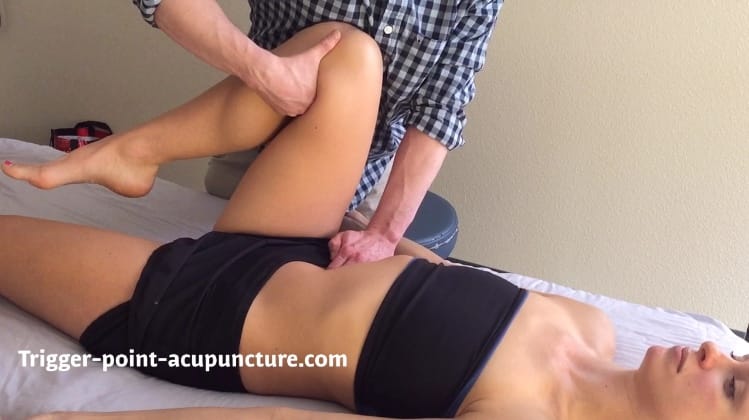One of the most under-utilized techniques in the acupuncturist’s tool belt is manual therapy (Tui Na). This modality can be an extremely effective tool to decrease pain and increase range of motion immediately for a patient. Manual therapy is a modality every acupuncture practitioner spent a fair amount of time learning in school. Of course, as any other technique learned, it takes practice and clinical use to stay consistent.
Often, we do not think there is time in treatment for manual therapy, so this video shows how you can spend just a few minutes to get fast results. A few minutes before or after treatment can make a world of difference in patient outcomes. Remember patients want the fastest results they can get!
When to use manual therapy
Every practitioner will have a preference. I used to always perform manual therapy before needling, but have shifted into using the techniques more post-treatment. The major exception to this is the needle sensitive patient or acute muscle spasm (i.e. torticollis). Using manual therapy before needling can decrease the discomfort of needling for a needle sensitive patient. The reasoning is simple; manual therapy to MTrP will decrease the active response of the trigger point. If a patient is hypersensitive to needling, 30 seconds of manual therapy to oversensitive trigger points makes all the difference in the world. After treatment, it can quickly make a difference in pain and range of motion on top of what acupuncture had already achieved. This manual therapy can really be the icing on the cake of a great treatment.
The reasoning is simple; manual therapy to MTrP will decrease the active response of the trigger point. If a patient is hypersensitive to needling, 30 seconds of manual therapy to oversensitive trigger points makes all the difference in the world. After treatment, it can quickly make a difference in pain and range of motion on top of what acupuncture had already achieved. This manual therapy can really be the icing on the cake of a great treatment.
Get immediate relief of symptoms
When performing manual therapy post-treatment, it is pivotal that it provides immediate relief and increase ROM. When utilized on top of acupuncture it can accelerate the treatment effect. As discussed in this short video a combination of passive flexion and active flexion with compression on an MTrP can help to decrease the pain quickly. If the patient is sensitive to pressure passive flexion performed correctly should decrease pain in the point by approximately 60%. Hold pressure in the decreased pain state at least 30 seconds and up to 2 minutes then retest and the pain point should be less sensitive. This technique is often called positional release or strain counter-strain. If the patient is less sensitive to deeper techniques applying pressure through flexion of the muscle can create a quick decrease in trigger points. A combination of the two can be beneficial and quickly attained.
For quickly increasing ROM I add PNF (Proprioceptive Neuromuscular Facilitation) or Muscle Energy techniques along with the above techniques. My personal favorite version of these is a method of Contract-Relax technique which works through reciprocal inhibition. For example, when a patient has decreased lateral flexion in the cervical spine they are placed in passive flexion. Once a range where the muscle restricts movement is attained the patient restricts lateral flexion in the opposing direction for several seconds. After a few seconds, the patient relaxes, and the passive range of motion increases. The results are instant and are phenomenal for increasing the range of motion.
Create a well-rounded treatment
As acupuncturists, we often fall into the trap of thinking our needles are a hammer and every problem is a nail. We have a complete scope of practice to treat a variety of conditions and should use the tools in our tool bag as efficiently as possible and to the best of our ability. When treating pain combining just a few minutes of manual techniques can be an excellent way to create a well-rounded approach to the patient’s symptoms. Please comment with your favorite manual therapy techniques to use on patients!
***Information in the above contains statements related to the below:
Bron, Carel et al. “Treatment of Myofascial Trigger Points in Patients with Chronic Shoulder Pain: A Randomized, Controlled Trial.” BMC Medicine 9 (2011): 8. PMC. Web. 29 Mar. 2018.
https://www.jiscs.com/Article.aspx?a=11
Hindle, Kayla B. et al. “Proprioceptive Neuromuscular Facilitation (PNF): Its Mechanisms and Effects on Range of Motion and Muscular Function.” Journal of Human Kinetics 31 (2012): 105–113. PMC. Web. 13 Apr. 2018.


Comments are closed.